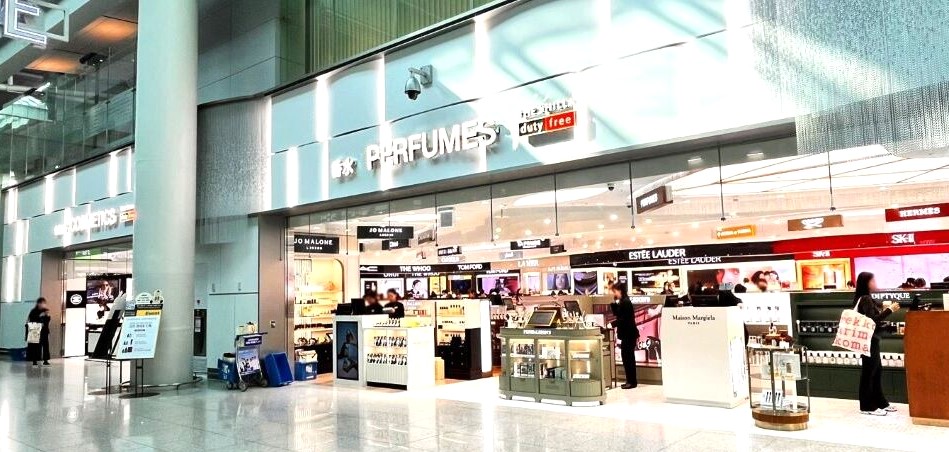INTERNATIONAL. The Duty Free World Council (DFWC) has reported that impulse purchasing in global duty free in Q1 2024 has shown a +2% increase (28% of airport shoppers) since the previous quarter (Q4 2023). That’s according to the latest quarterly DFWC KPI Monitor, produced by industry research agency m1nd-set.
The KPI Monitor also shows a moderate decline in planned purchasing with undecided planners (i.e. those shoppers who plan their purchases with either some idea or no specific idea in mind of which product they wish to purchase) falling -2% to 41% in Q1. There was no change in the percentage of specific purchase planners against the previous quarter, which remained at 30%.
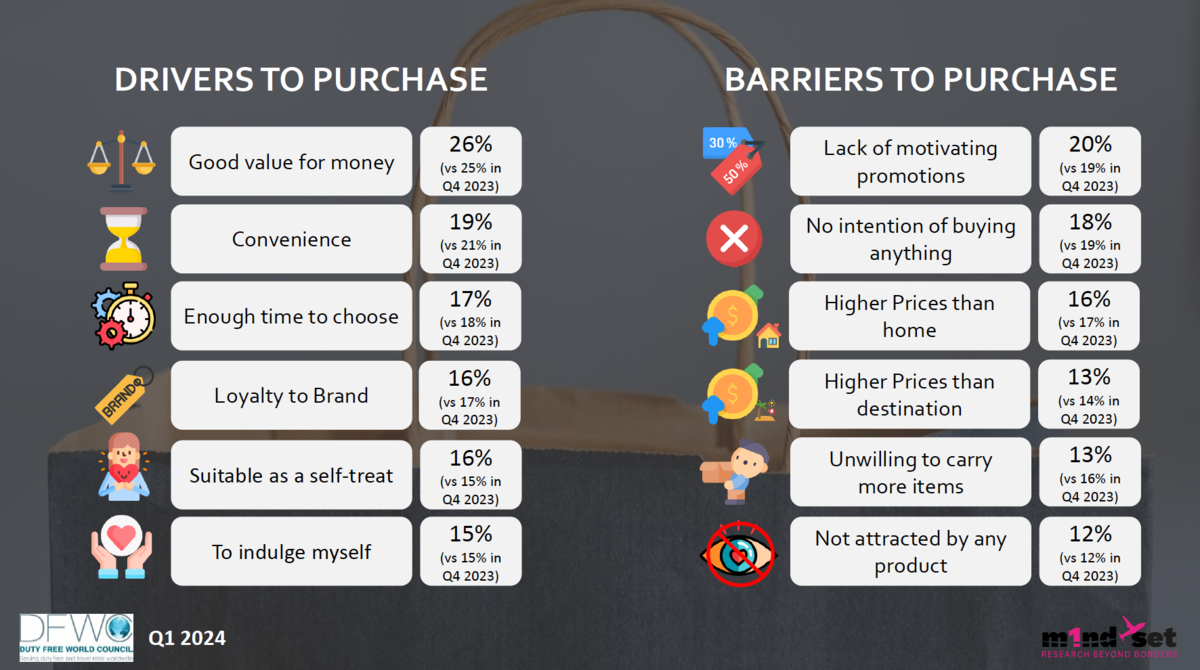
Purpose of purchase also changed moderately between Q1 2024 and the previous quarter with an increase in self-indulgence and a decline in gift purchasing. Self-purchases increased by +2% to 51% in Q1, while gift purchases fell by 2 percentage points to 25%. Purchases for sharing increased by +1% over the same period.
Touchpoints, whether physical, digital or human, were also monitored and reveal highly actionable data, according to m1nd-set CEO and Owner Peter Mohn. He explained: “The influence of sales staff and the engagement level with customers in the store are perhaps among the most interesting and actionable performance indicators we study in the monitor, as staff engagement has a direct influence on the customers’ decision to purchase.
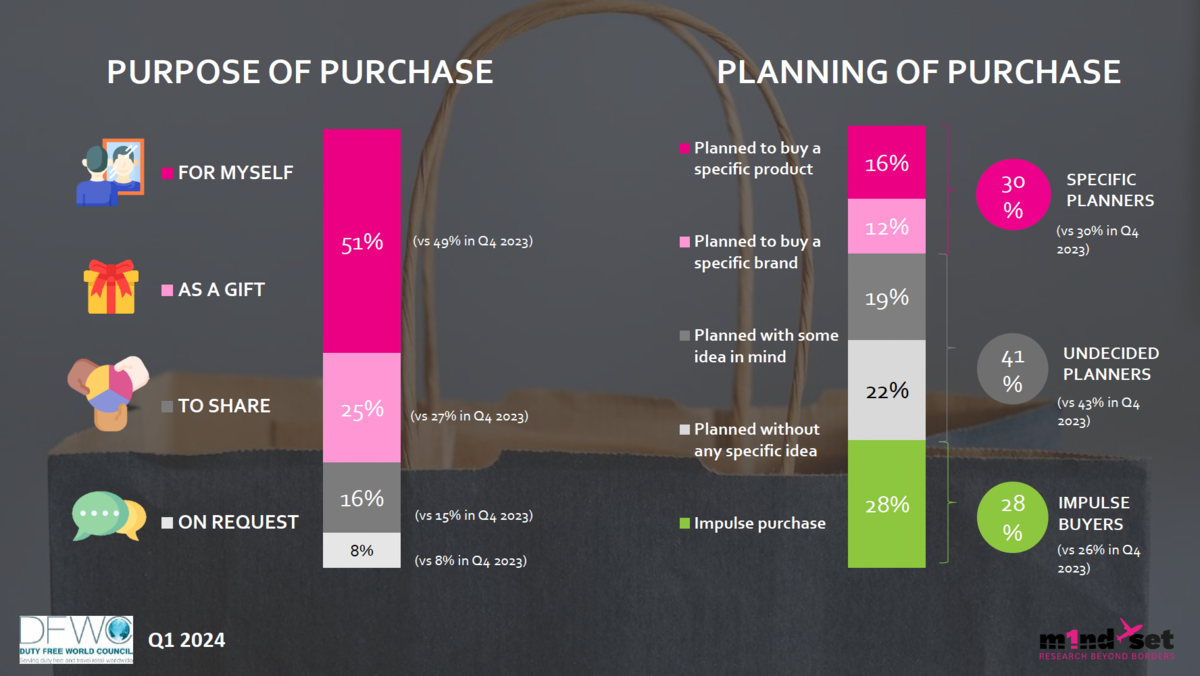
“When staff are motivated to interact with customers and engagement levels are high, we generally see a positive influence of staff interactions. This is the case for Q1 this year where we see an increase over Q4 2023 in both criteria.”
Staff interaction rose by +3% to 50% in Q1, and the positive influence of the interaction rose 4 percentage points to 73% over the same period. “The fact that unplanned impulse purchases also increased between the last two quarters is no coincidence, as staff are instrumental in influencing the purchase decision and converting browsers into shoppers,” Mohn added.

The DFWC KPI Monitor also provides traffic analysis, which compares international passenger departures between November 2023 and January 2024 to the pre-COVID era of November 2018 to January 2019. It shows a healthy traffic revival on average, albeit with some considerable variations between world regions.
Globally, air traffic during the three-month period was at 108% of the 2018-2019 level, with 452 million international passengers. According to the research, the only region not to have arrived at, or surpassed, the pre-COVID level is Asia Pacific, where international traffic in the region reached 87% of the pre-pandemic period, with 111 million international departures.

North America and the Middle East & Africa regions both surpassed pre-COVID traffic levels by a significant margin. International departures between November 2023 and January this year in North America stood at 128% against the same period between 2018 and 2019 with 51 million departures. The Middle East & Africa with 66 million departures was at 125% of 2018/19 levels.
The third-strongest growth was seen in Europe where international passenger departures were at 113% of the pre-pandemic period, with the continent posting the highest passenger volume with 191 million departures. South America follows in fourth place at 110% and the lowest overall volume in international departures with 33 million outbound passengers during the three-month period surveyed.
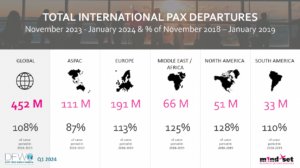
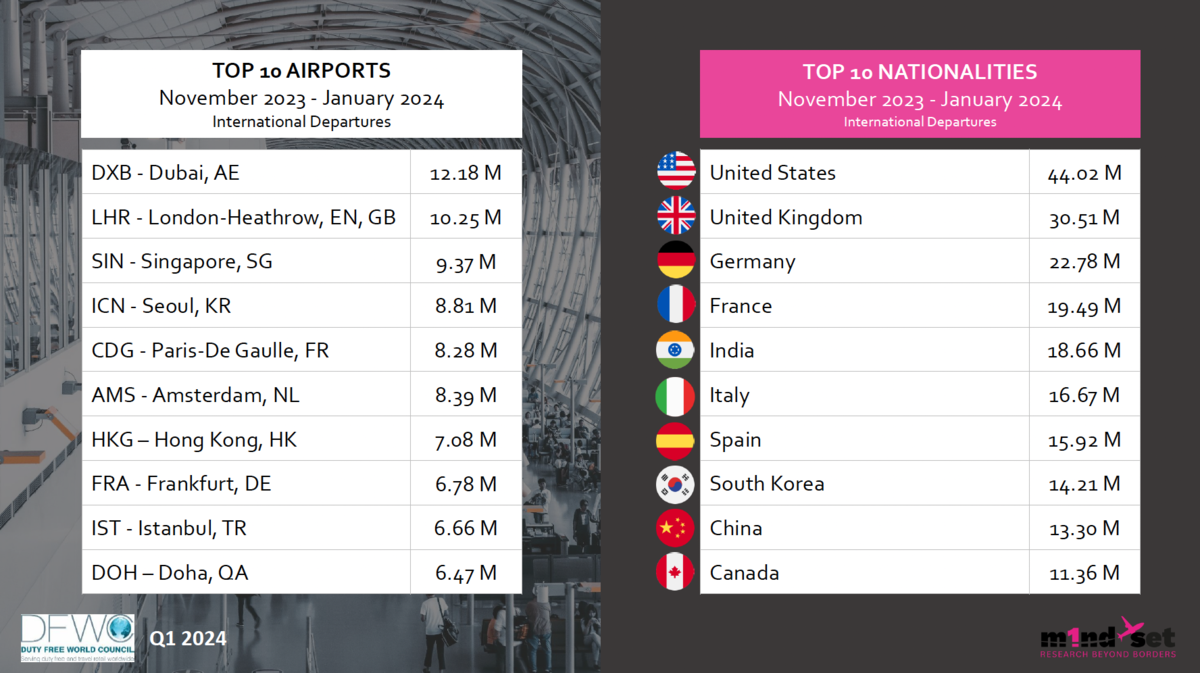
DFWC President Sarah Branquinho commented: “International traffic is now well on the way to a full revival across the globe in 2024, and Asia Pacific is set to join the other regions with a return to pre-pandemic levels. The long-awaited return of the Chinese travellers is finally here also, as Chinese travellers are now among the top ten nationalities for international departures.
“The industry needs to be ready to greet them and meet their expectations with renewed innovation, exciting experiential retail and customer service that is second to none. The profile of the Chinese traveller has evolved since the pre-pandemic period, with a greater proportion of younger travellers who will be discovering some destinations – and the travel retail offer there – for the first time.
“All industry stakeholders must ensure the product offer and on-floor sales staff create a positive experience to ensure that travel retail is firmly on the radar of these new travellers as a shopping destination not to be missed.” ✈









